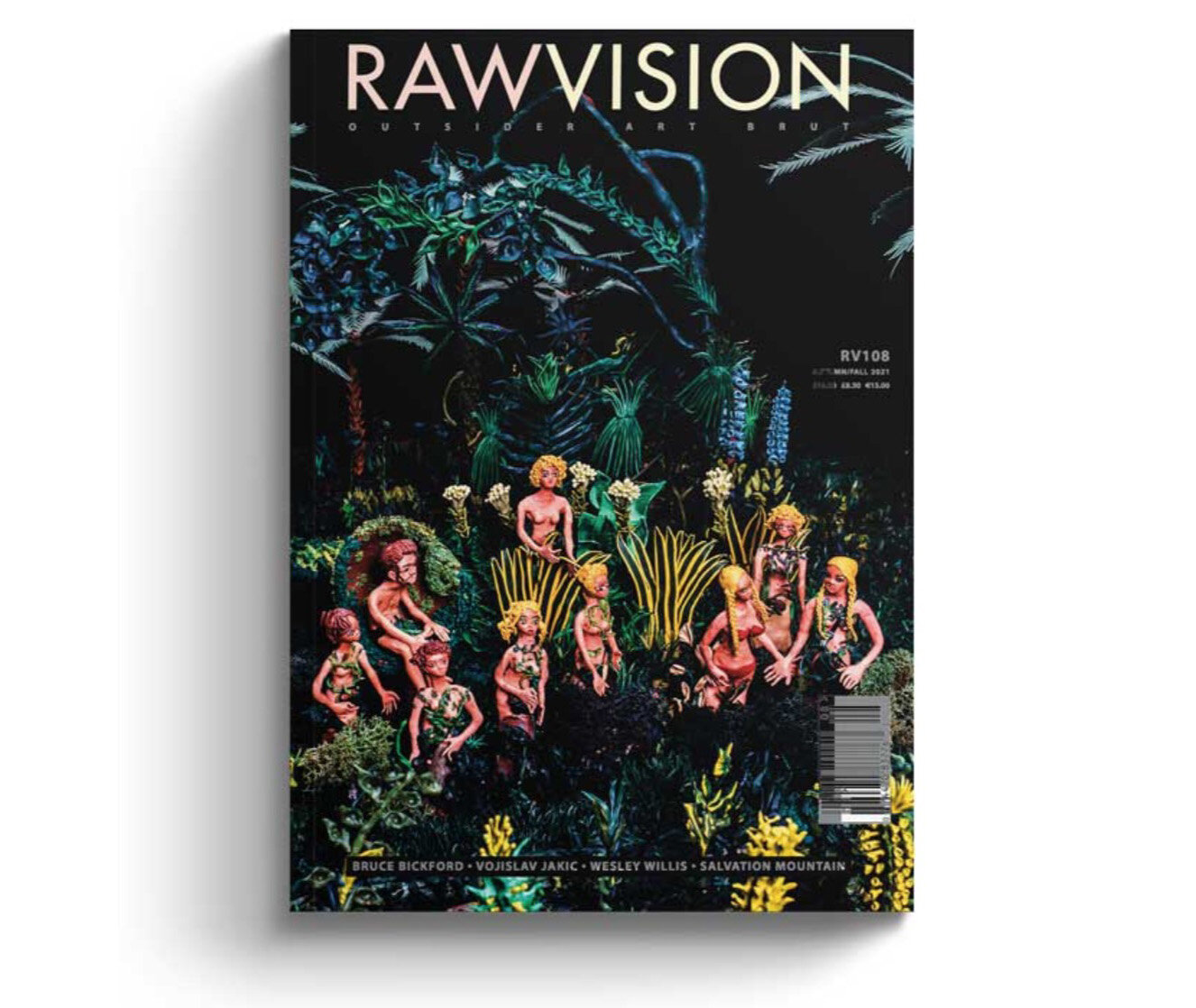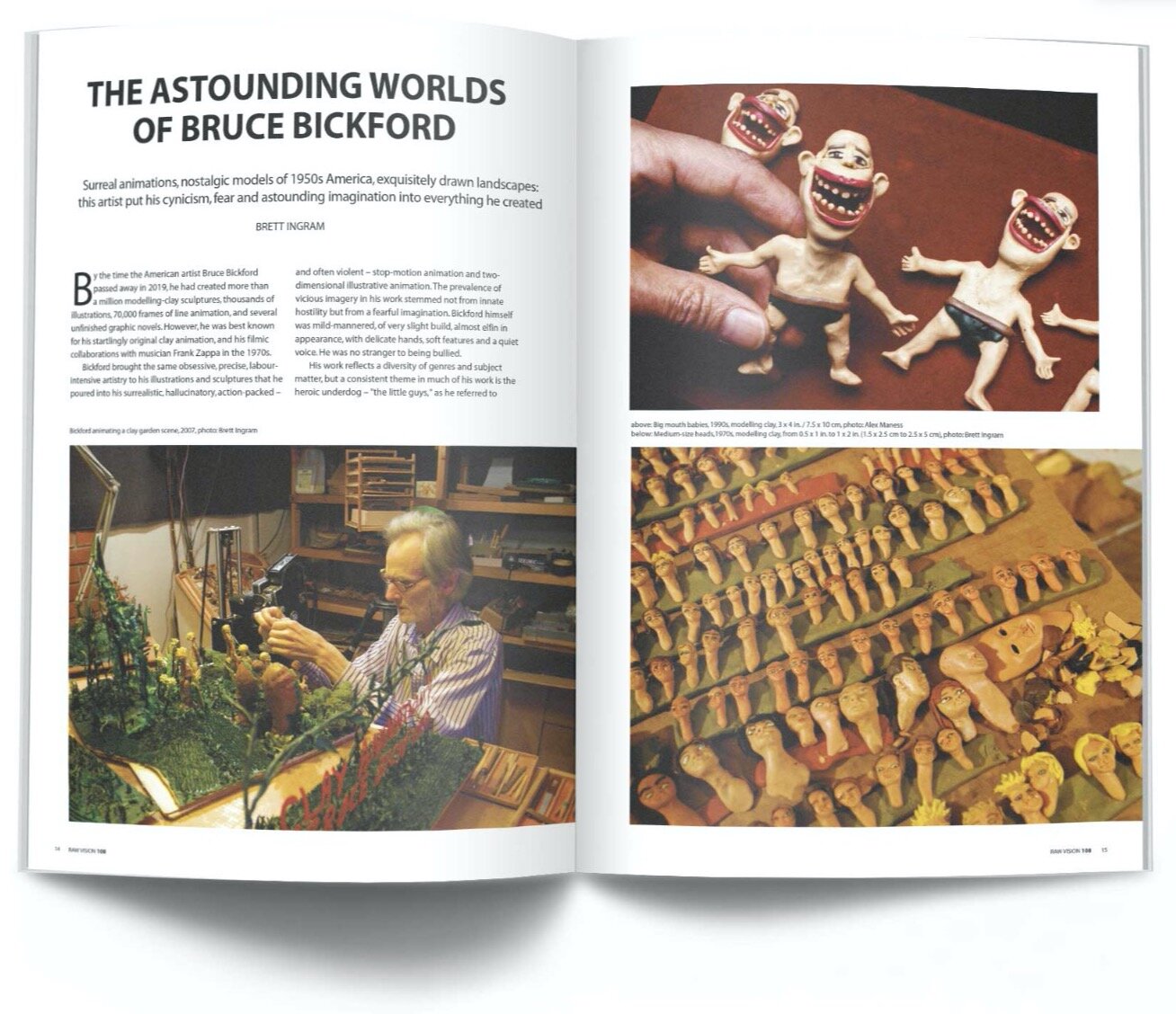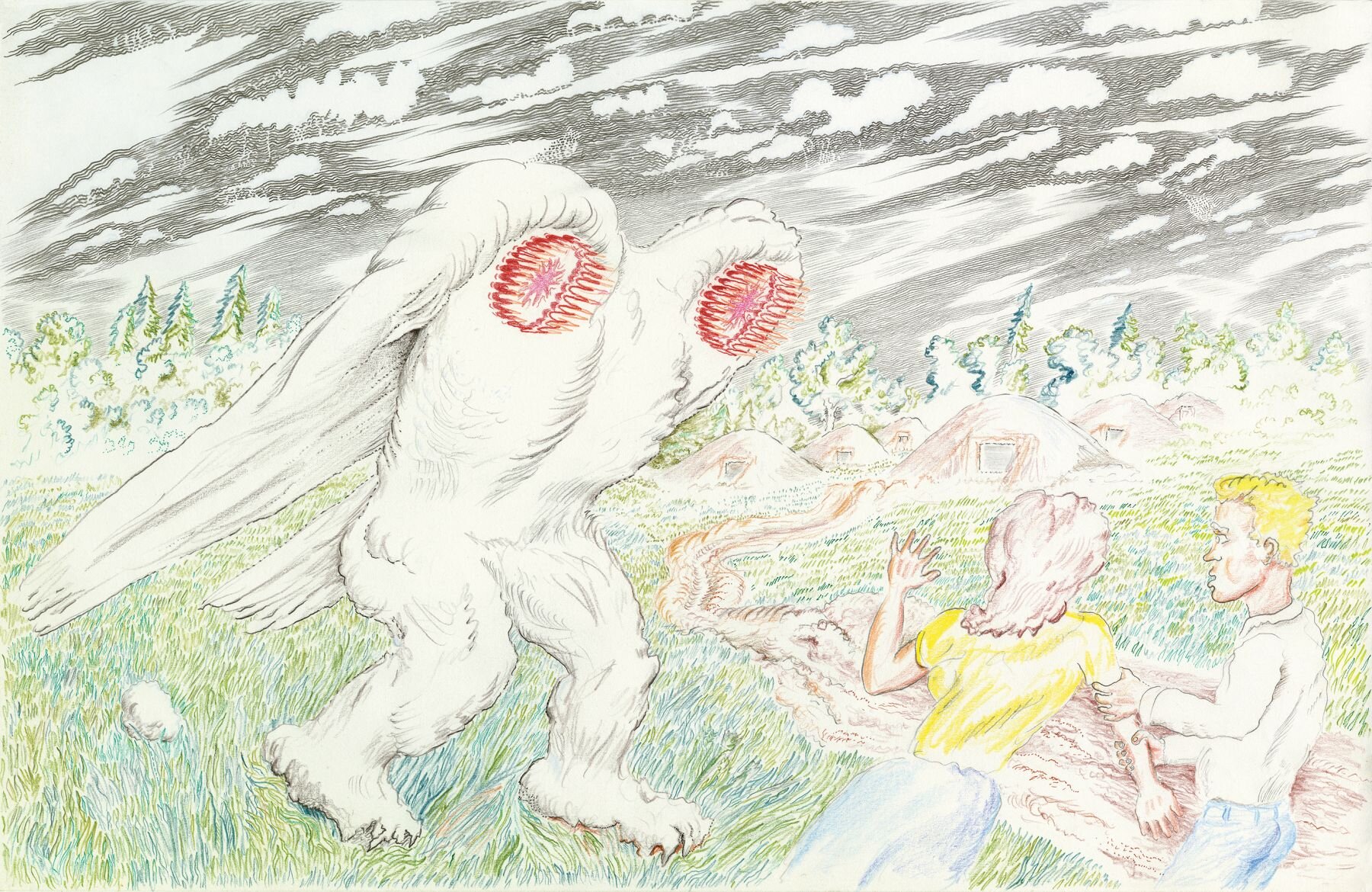BRUCE BICKFORD "CIGARETTES" T-SHIRT
$30.00
“CIGARETTES” by Bruce Bickford silkscreened in white on a black US BLANKS 100% organic cotton t-shirt, with the official BB self-portrait logo on the sleeve!
THE UPLANDS Limited Edition Exhibition Catalog
$35.00
This limited edition catalog contains 30 color and black & white images from Bruce Bickford’s The Uplands solo exhibition at the Andrew Edlin Gallery and Electric Lady Studios in New York City in 2021.
Published by the Bruce Bickford Estate with contributions from Dan Nadel and John Hanford.
RAW VISION Feature + Cover!
Bruce is the cover story in issue #108 of the mighty RAW VISION Magazine!
THE ASTOUNDING WORLDS OF BRUCE BICKFORD feature written by Brett Ingram, Director of the magnificent Bruce Bickford documentary MONSTER ROAD (2004) available to stream HERE
Available in both Print and Digital formats from Raw Vision HERE
Bruce Bickford
THE UPLANDS
Curated by Eric White
July 12 – August 13, 2021
Andrew Edlin Gallery
212 Bowery New York NY 10012
+
Electric Lady Studios
52 W 8th Street New York NY 10011
Andrew Edlin Gallery is pleased to present the first New York gallery exhibition of drawings by celebrated artist Bruce Bickford (1947-2019). Best known for his groundbreaking 1970s stop-motion animations for Frank Zappa, Bickford was a prolific independent animator and illustrator whose legacy of films, graphic novels, and drawings are rooted in a narrative blend of B-movies, advertising icons, war, alternate histories, and paranormal phenomena. The Uplands presents works created from 2012 until the artist’s passing and includes a series focused on the structure of Bickford’s fictional Pacific-Northwest landscape; outtakes from his graphic novel Vampire Picnic; and a suite of images depicting Zappa himself, which will be displayed at Electric Lady Studios where the musician recorded part of his renowned 1974 album Apostrophe’. A series of his graphite-on-paper animations will be screening at both exhibitions.
Bickford’s drawings, like his perpetual motion animations, depict a reality that was constantly unfolding in front of him. Much of this is evident in the Uplands, about which he wrote: “Several cults and interest groups exist in the Uplands, but the main society there has been quite stable for centuries, dating back to the early Viking settlements. Fortunately for them, there is a power that hovers over the Uplands, a barely visible shroud of energy which prevents the usage of modern electronic devices.” These drawings function as articulate, seemingly objective descriptions of Bickford’s universe of ideas because his mechanical pencil strokes never vary in width and seem as sure-footed as the lines made by an engineer carefully delineating a gear shift. They are unaffected, objective, like the early animation pioneer Winsor McCay or the contemporary surrealist Jim Shaw. And then the strange creeps in.
Bruce Bickford was raised in Seattle, Washington, the son of a Boeing engineer. He and his brothers grew up with a lust for action and a love of movies. “Fantasy,” Bickford said, “is usually about perfecting your imperfect life.” His imperfect life included enlisting in the U.S. Marine Corps in 1966 followed by an eleven-month stint in Vietnam. Upon returning home in 1969, Bickford threw himself into filmmaking. Impressed by Frank Zappa’s film 200 Motels (1971) and having completed numerous clay animation sequences of his own, in 1973, he sought out the musician in Los Angeles. In his lengthy creative partnership with Zappa, he produced multiple films and animation sequences. From 1981 until his passing in April 2019, Bickford made his own films, some of which were screened internationally, and in later years created stand-alone images and graphic novels.
Though he rarely spoke of influences outside of cinema, a link can be traced between Bickford and cartoonists and animators such as Robert Crumb and Victor Moscoso, who share his fascination with the endless mutability of the body and space; and with H.R. Giger, who built a fictional world with scaffolding so elaborate that the viewer or reader might only see the surface. But when we step back to look at Bickford’s drawings, it’s the Belgian master James Ensor who looms over the activity: the woozy lines, the deftly orchestrated parades of beings, the obsession with what lies beneath, and shimmering colors. In Bickford’s world, each image is the manifestation of a living consciousness that he is both generating and documenting, producing equal parts wonder and bafflement.




